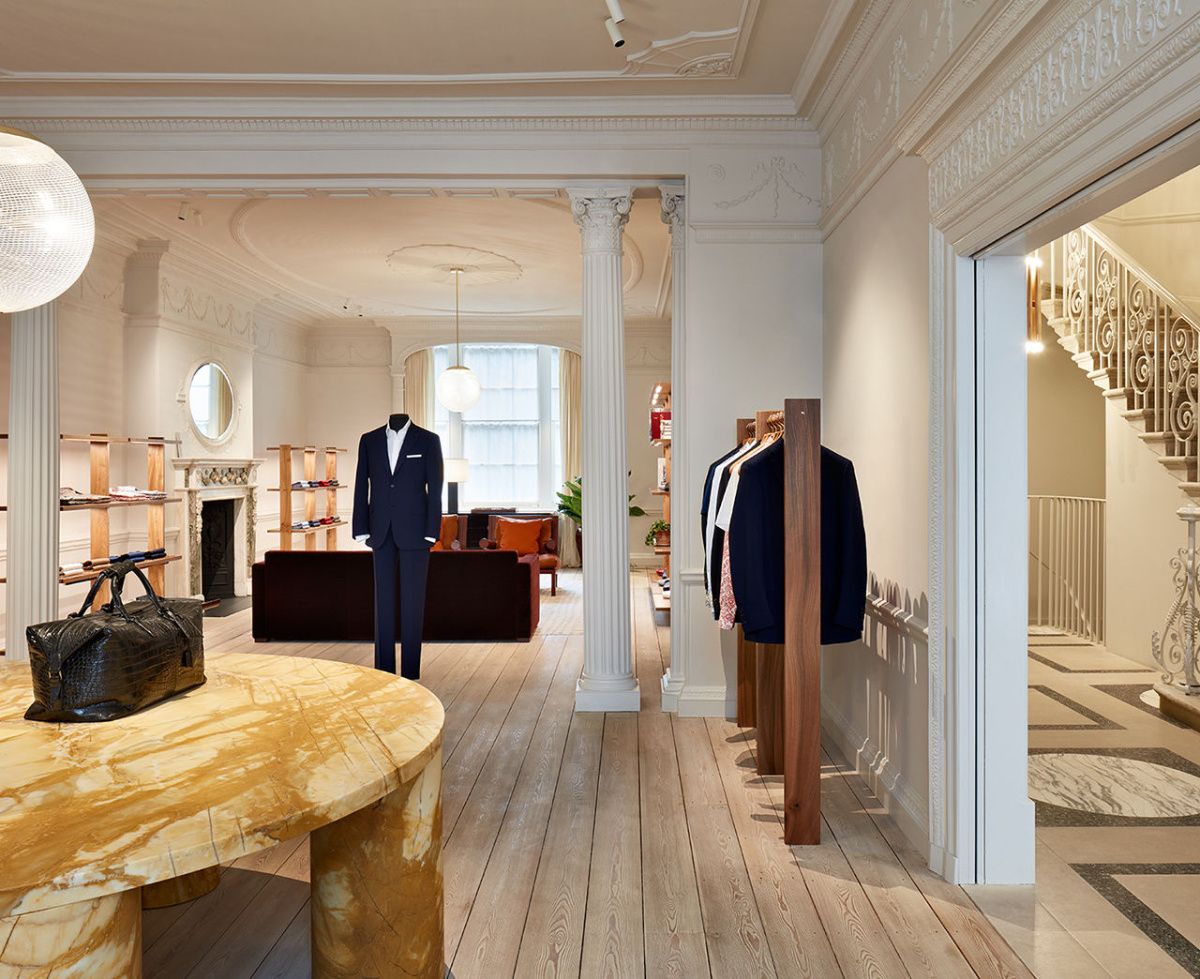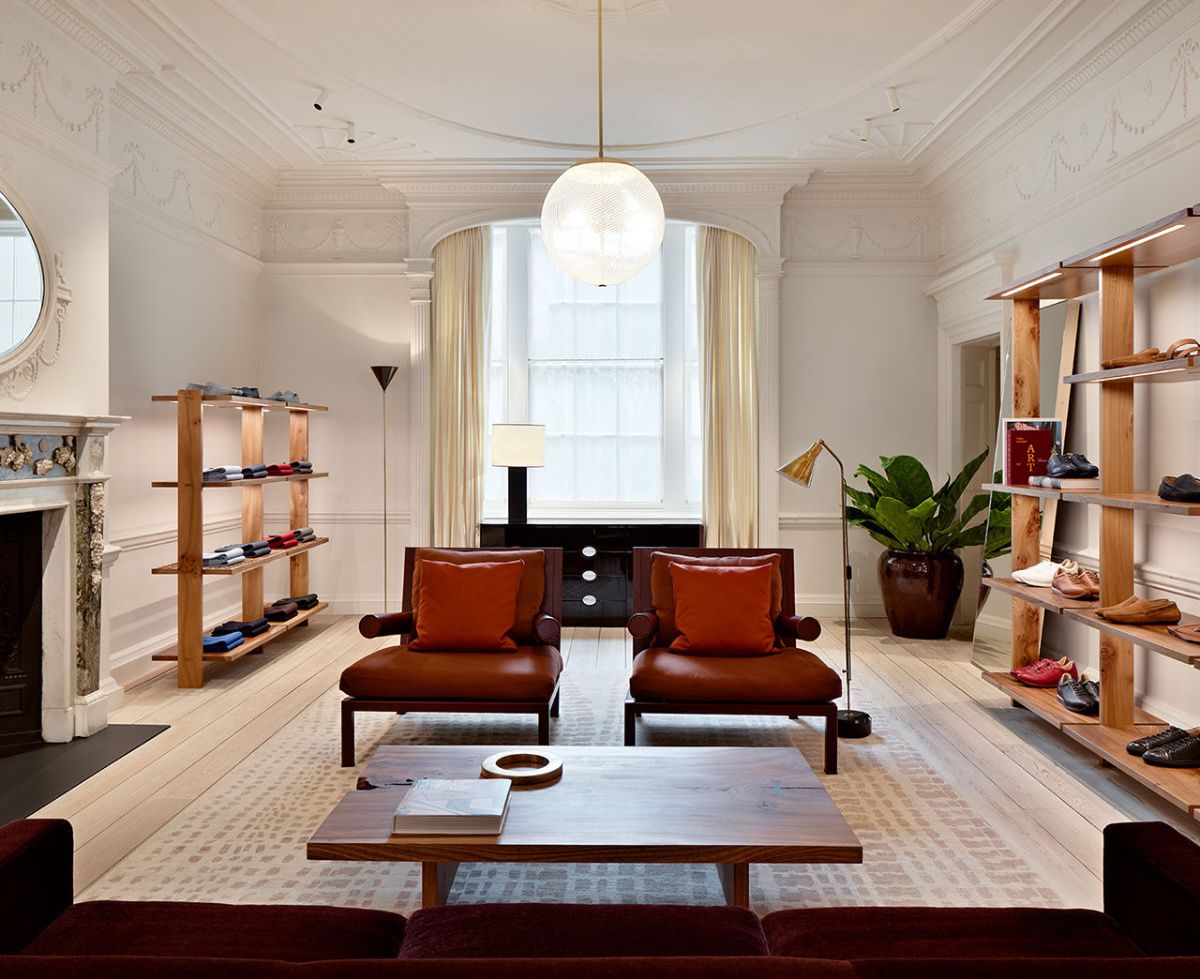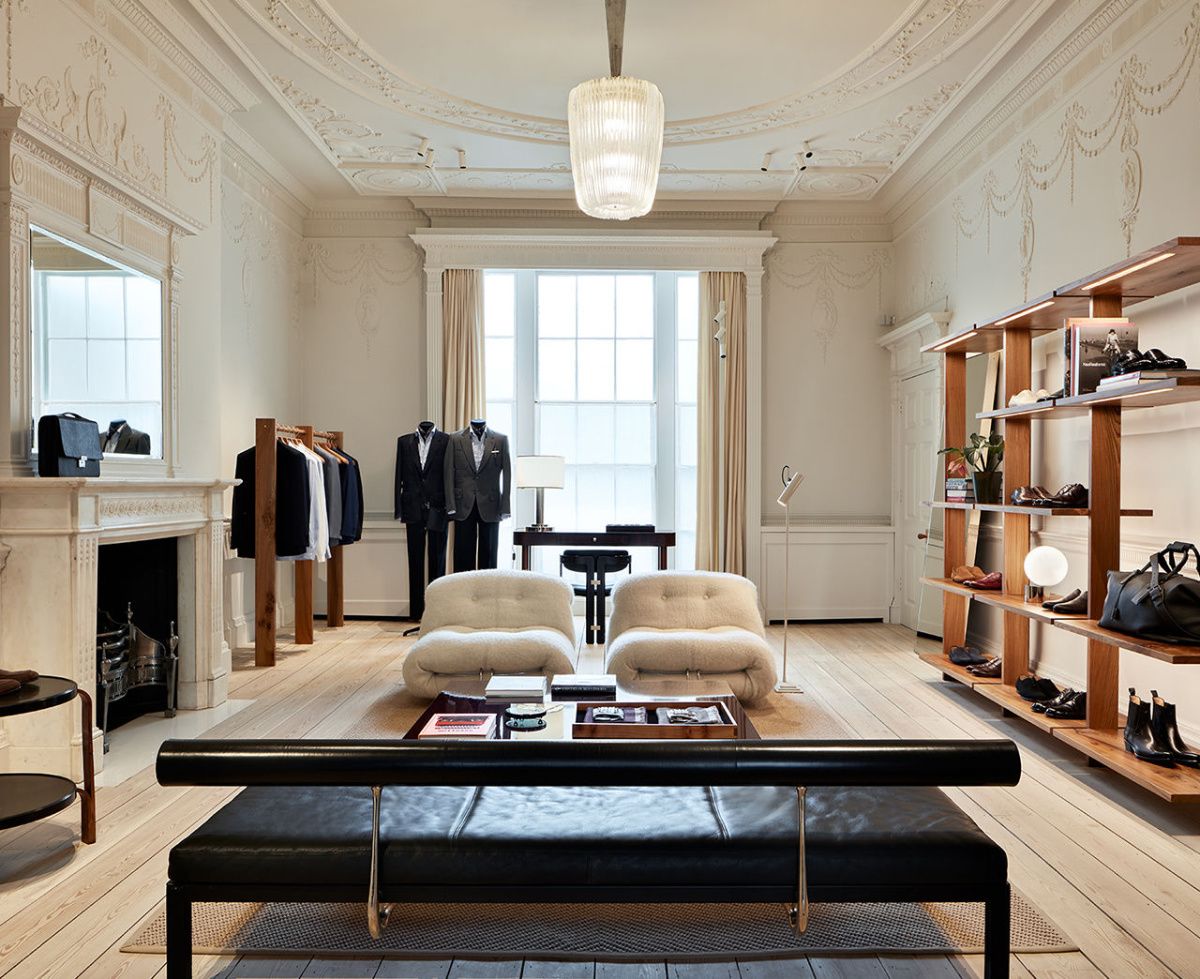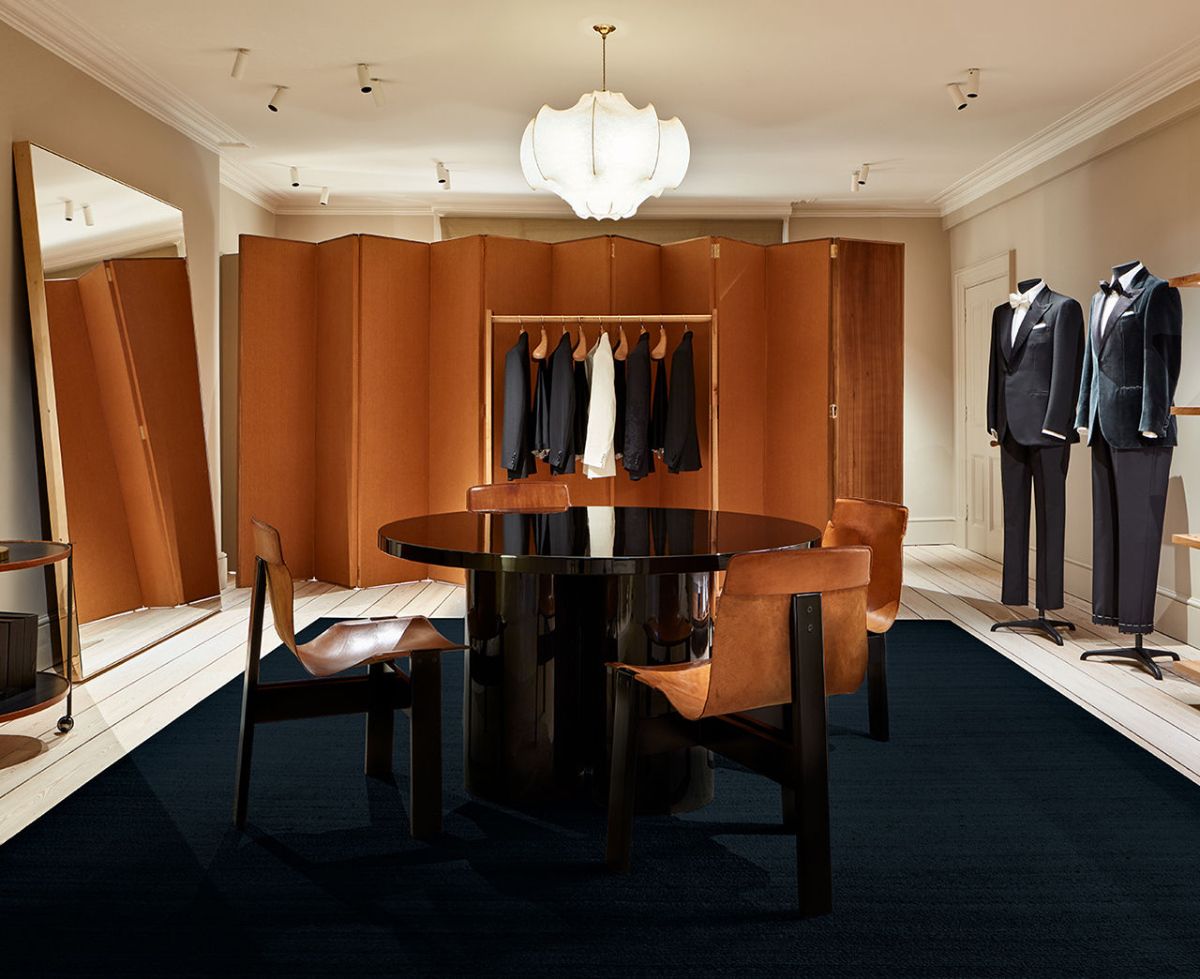Brioni in Bruton Street: London home, Roman soul
Kering, 14.01.2020
32 Bruton Street. On the outside, a classic, listed four-story Georgian building with intact façade built in 1736 in the toney Mayfair Street where Queen Elizabeth II was born. Inside, an iconic 18th-century townhouse with characteristic high ceilings, fireplaces and ornate moldings; the décor and furnishings chosen by a Roman gentleman, replete with mid-century Italian furniture and lighting – a classic London townhouse with a Roman soul. Welcome to the newly-refurbished Brioni presence in London.
“We wanted to rediscover the quintessentially English frame of the building, and inhabit it with a Roman soul. We also felt strongly that Brioni’s flagships should be a home to important design just as the brand is to important tailoring,” says Philip Joseph, creative director of P. Joseph, the London-based architecture studio he co-founded in 2015 with his twin brother Peter, which handled the refurbishment.
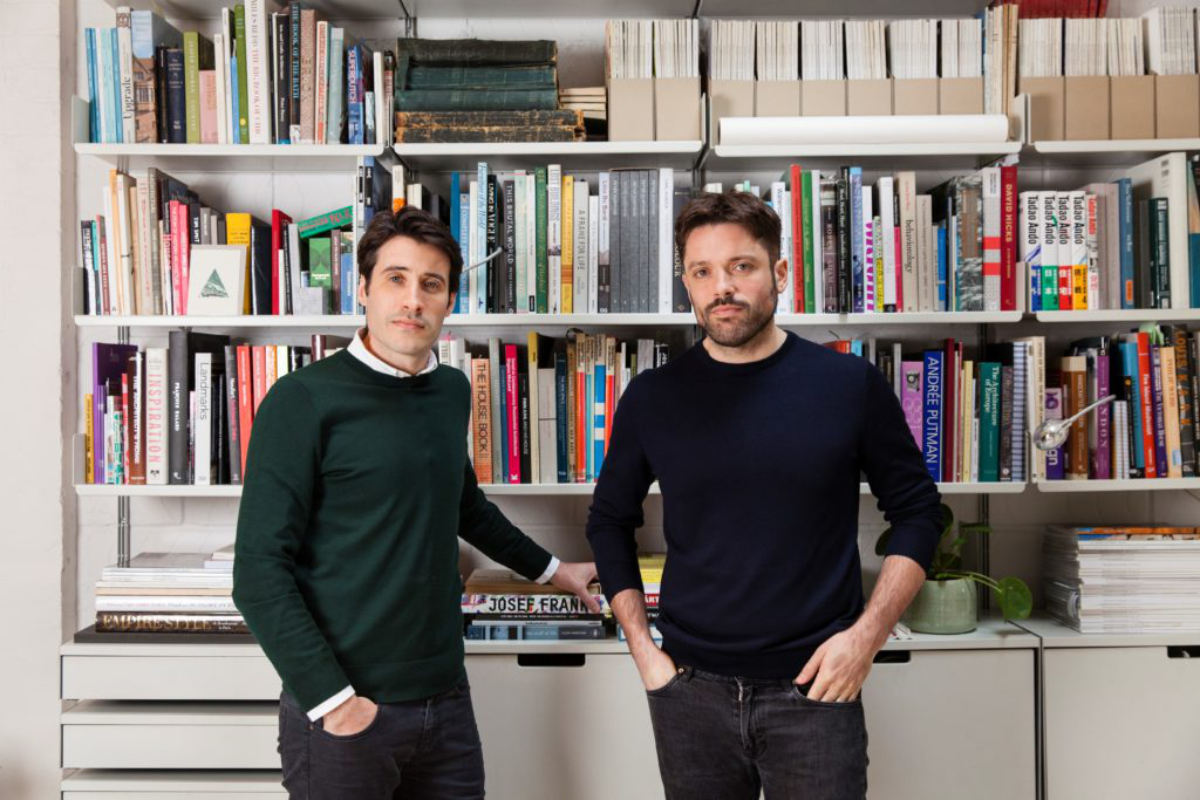
Brioni Incarnate
P. Joseph approached the design of the flagship by inhabiting the townhouse with an imaginary Roman collector, carefully bringing each floor to life with the personification of the Brioni brand as a real character. P. Joseph commissioned design historian Dr. Catharine Rossi to establish a framework for Brioni to build a real collection of historic post-war Italian design pieces with the aim of inhabiting that real-life Brioni persona: a Roman gentleman of sophisticated taste and style, at home anywhere in the world. “It’s more like a private residence than a retail space,” adds Joseph. The décor throughout includes original furniture and lighting from the 1940s to the 1980s by – among others – Carlo Scarpa, Franco Albini, Afra and Tobia Scarpa, Achille and Pier Giacomo Castiglioni, Luigi Caccia Dominioni and Angelo Mangiarotti.
Playing down some of the hard evidence of retail was key to creating the desired ambiance. “Fortunately, this building still existed as a house, so it was more a case of peeling back layers of traditional retail fixtures to reveal its beauty.” As Brioni is returning to its roots of 75 years of perfecting the sartorial art of tailoring, so a similar quest for veracity underscores the renewal of its London flagship. Joseph stripped away layers from fireplaces, mirrors, and floors to find and restore the bones of the quintessential English framework of the building.
The Italian furniture, lighting and textile collections sit comfortably within the English architectural frame as soft, rich wall colors reference the palette of Rome, and a layer of quieter craftsmanship ties both cultures together beautifully. P. Joseph worked with British cabinet makers to design and make solid fittings from specially sourced Scottish elm while a large Giallo di Sienna marble table has pride of place on the ground floor – so big, “We had to close Bruton Street for an hour to get it in with a crane,” says store manager Gemma Plume. The table serves as a display area, “But it’s not a barrier, as a traditional display case could be,” she adds.
There’s a Portland Stone and Carrara marble floor in the entry foyer, based on the floor of the Pantheon in Rome. And the carpets and tapestry-covered changing screens: original designs commissioned from the archive of Genoese textile manufacturer M.I.T.A., including what Joseph describes as, “A vivid Michael Rachlis tapestry from 1952 originally created for the Andrea Doria ocean liner”.
An Intimate Setting for Clients
A grand staircase invites clients to ascend into the world of Brioni, with each floor becoming more intimate: clients are welcomed on the ground floor and offered something to drink as they browse the collection. Fitting areas are on the next two floors: not closed-off rooms, but flexible within the “living” areas, allowing as much or as little room as necessary for client and tailor. Ready-to-wear clients gravitate to the grander “piano nobile” first floor; bespoke clients to the second – the most intimate area in the store. “This is where we record the notes, the measurements, all the details we need to ensure we’re interpreting everything the bespoke client tells us he wants, explains Plume. Sartorial retail needs a high level of trust.”
Comfort and Service
The boutique setting aims to provide not just comfort but efficiency, a blending of culture and style centered by Brioni’s sartorial timelessness. But how does the Brioni client, bespoke or off-the-rack, resonate with this Anglo-Roman residential setting?
“They like it”, Plume avers. “Money is not the issue for our client – it’s time. This is a place where they can relax, make a call, feel comfortable, and select their wardrobe all at the same time. It’s an extension of their life.” A ‘good fit’ like their Brioni suit.
Architecturally, P. Joseph is aiming to create a similar sense of place, combined with convenience, creativity and comfort in forthcoming global Brioni boutiques in such places as Ginza in Tokyo, where it seeks to create another flagship paying homage to the company’s Roman roots while employing the local materials and craftsmanship of Japan. “The key is working out what elements should be local and about the place, and what should be the common thread of Brioni that runs through everything,” says Joseph.
For the client, wherever in the world he happens to be, this new approach fosters a sense of belonging and exclusivity. “The ‘home-away-from-home’ feel is new,” says Plume. “But Brioni has always been a kind of club: you only realize someone else is wearing a Brioni suit when you are wearing one yourself. Now we have a clubhouse.”



